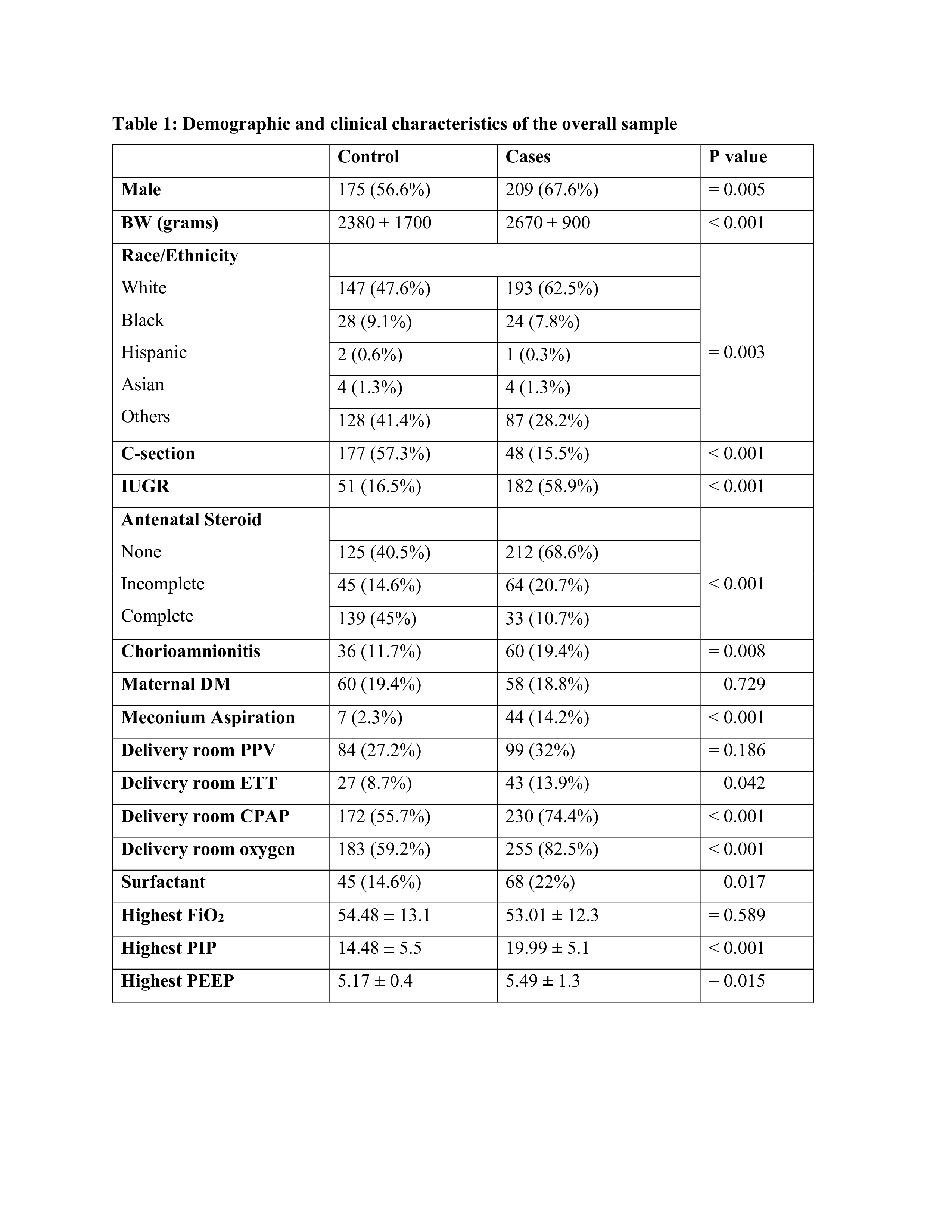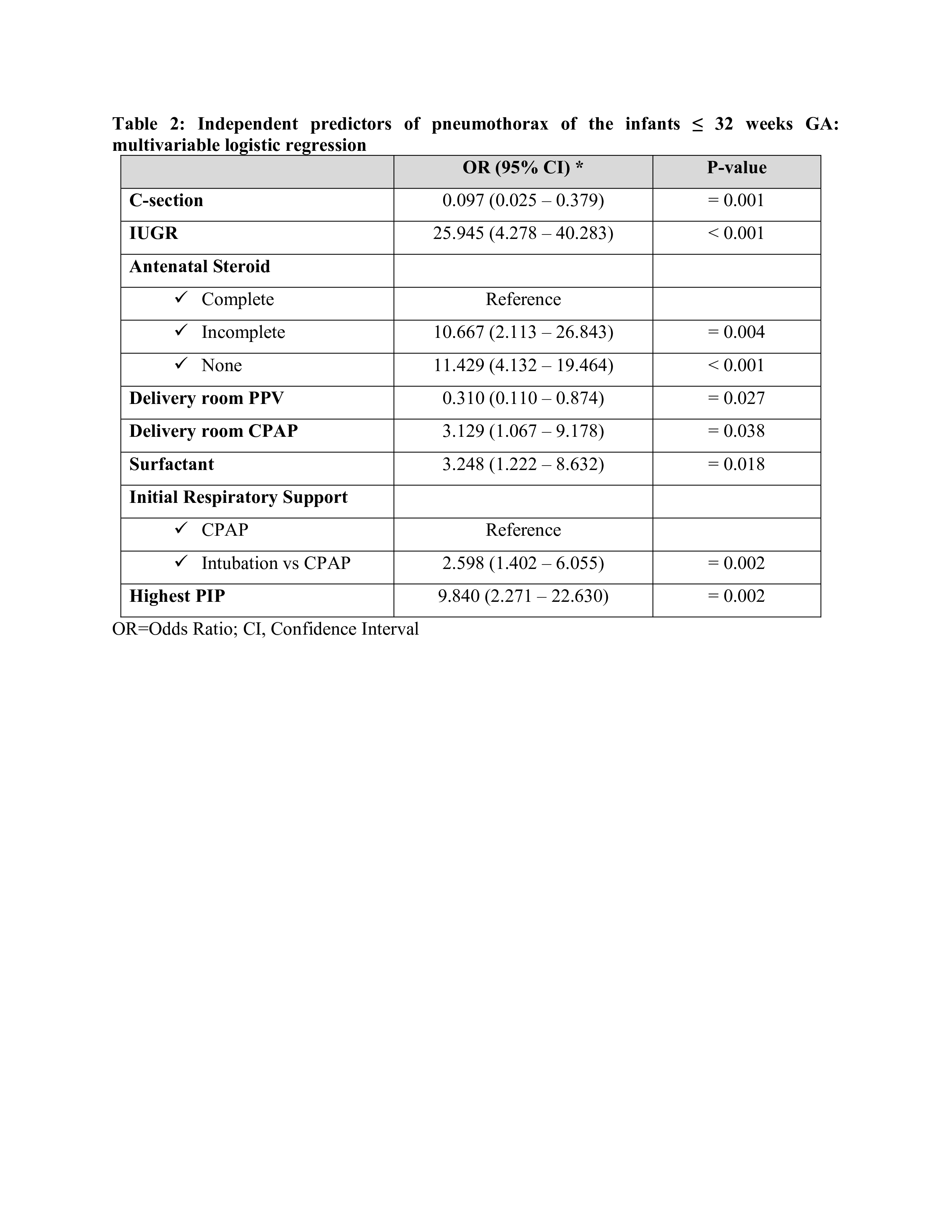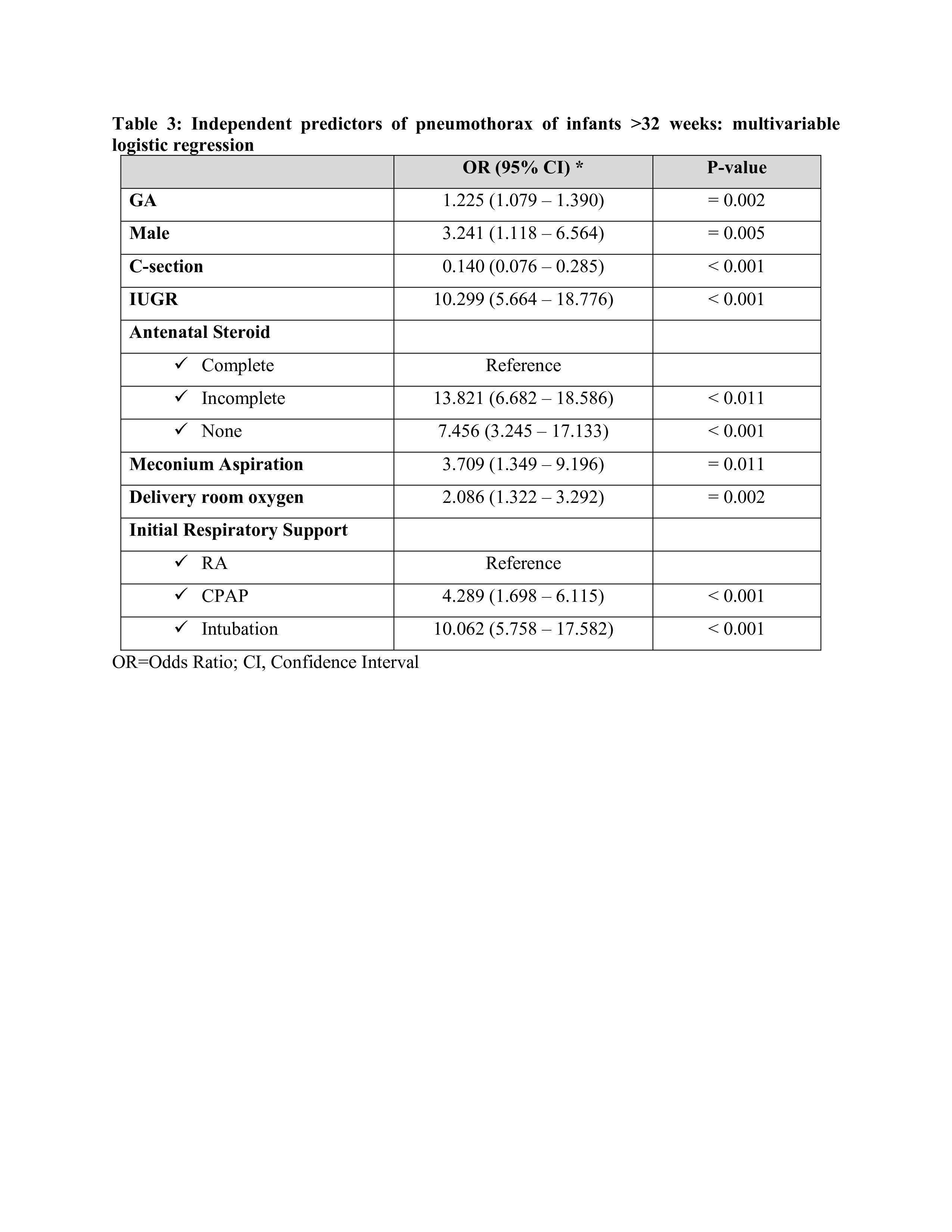Neonatology
Session: Neonatal Pulmonology - Clinical Science 4: Clinical Practice Questions, Going Home
569 - Risk Factors Associated with Pneumothorax in Newborns
Monday, May 6, 2024
9:30 AM - 11:30 AM ET
Poster Number: 569
Publication Number: 569.2867
Publication Number: 569.2867

Mohsen A.A. Farghaly, MD
Neonatologist
Cleveland Clinic Children's
Cleveland, Ohio, United States
Presenting Author(s)
Background: Pneumothorax is a serious event that can occur in neonates with respiratory distress in the neonatal intensive care unit (NICU).
Objective: To evaluate risk factors, and mode of respiratory support in infants who developed pneumothorax.
Design/Methods: This case-control study identified all newborns that had pneumothorax over five-year period, from 2017 to 2022 in three NICUs. Patients with pneumothorax due to cardiothoracic surgical procedure, and/or congenital lobar emphysema were excluded. Maternal and neonatal demographic and clinical characteristics were reviewed. Patients were classified into two GA categories: ≤ 32 weeks and >32 weeks. Controls without pneumothorax matched for GA, sex, and admission year were used for comparisons.
Results: The study included 618 subjects; 309 patients and 309 controls. In overall cases, median age of pneumothorax was 6 hours, and majority of the patients (71%) did not require escalation of respiratory support after pneumothorax. For newborns ≤ 32 weeks GA, pneumothorax was associated with IUGR [OR=25.9(CI:4.2–40.2,P < 0.001)], absence of antenatal steroid [OR=11.4(CI:4.1–19.4,P < 0.001)], intubation [OR=2.5(CI:1.4–6.0,P=0.002)], higher PIP [OR=9.8(CI:2.2-22.6,P=0.002)]. For newborns >32 weeks GA, pneumothorax was associated with male sex [OR=3.2(CI:1.1–6.5,P=0.005)], IUGR [OR=10.2(CI:5.6–18.7,P < 0.001)], lack of antenatal steroid [OR=7.4(CI:3.2–17.1,P < 0.001)], meconium aspiration [OR=3.7(CI:1.3– 9.1,P= 0.01)], need for delivery room oxygen [OR=2.08(CI:1.3–3.2,P=0.002)], CPAP [OR=4.2(CI:1.6–6.1,P < 0.001)], and intubation [OR=10.0(CI:5.7-17.5,P < 0.001)].
Conclusion(s): Pneumothorax is associated with male sex, lack of antenatal steroids, meconium aspiration, respiratory distress syndrome and use of mechanical ventilation.



